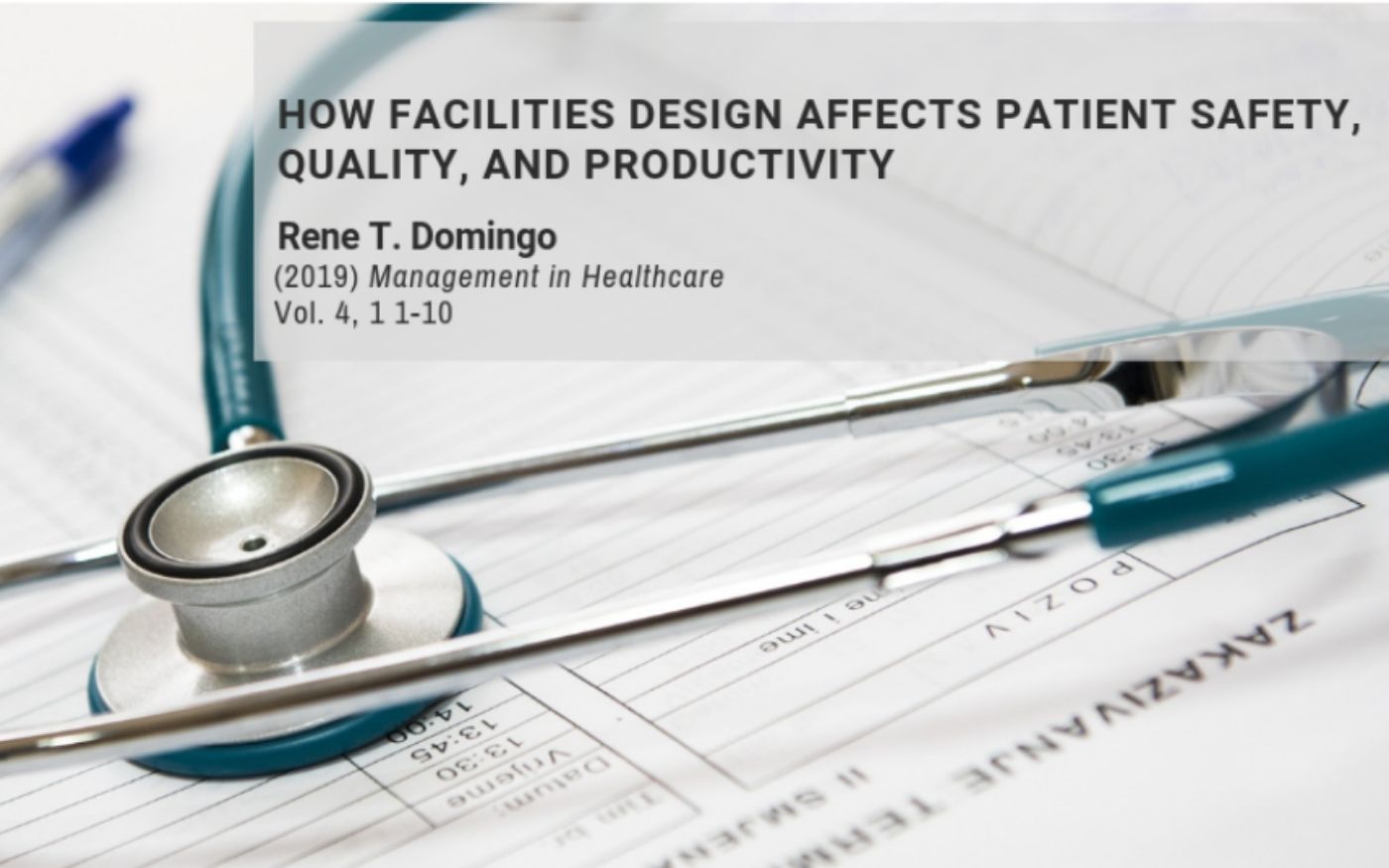Research by: Rene T. Domingo
Executive Summary
Facility usability can affect patient safety, patient care, patient satisfaction, patient flow as well as staff productivity and cost-efficiencies. Hospital facilities design and configuration can help or hinder all critical flows – process flows, workflows, people flow, material flow, and information flow. Current evidence shows that poor usability of hospital facilities is inducing staff to commit errors and do their work inefficiently. On the other hand, ergonomic facility design like that of patient rooms is proven to improve staff productivity as well as patient satisfaction and experience. Facilities are long term assets and their impact on performance, favorable or adverse, are more lasting than other hospital resources like consumable resources and supplies. Once procured or installed, it is economically and technically difficult to alter them as an afterthought.
To ensure that designs of facilities are human-centered, their selection must involve all process owners and direct users like clinicians, nurses, equipment operators, housekeeping and maintenance personnel, patients and their families and visitors. In facility planning, there must be early and concurrent involvement of all the stakeholders from the beginning to the end of the facility’s life. User involvement includes participation, consultation, validation, recommendation, suggestions, feedback, and sign off on new facility design and procurement. In addition to the financial, technical, time, and reputational criteria, usability must play an equally important role in facility selection and design.
Facility usability covers four major areas: Friendliness, Flexibility, Fail-safe, and Future-proof. User-friendly facilities incorporate human-centered design. They are patient-friendly, staff-friendly, and visitor friendly. Well-designed facilities are flexible, offering sufficient options for personalization or customization. A well-designed facility has sufficient fail-safe features to protect its users – operators, and patients – from harm in case of any facility or device failure and misuse. New facilities must be designed for current use and future use with provisions for interoperability with existing facilities and upgradability to meet future demand or load.
Facility design must harmonize with other design aspects of the hospital, namely: business model design, organizational design, process design, workplace design, job design, product design, and information flow design. These design areas interact and influence each other. The business model guides the capital investment strategy. The organizational structure determines the decision makers in investment and procurement decisions. The planned process flow design will initially decide facility design and requirements. But the actual facilities installed can alter the final process flows – both people and material. Facilities through their design and usability can directly or indirectly influence the final design of the workplace, jobs, products, and information flow.
Because of the large, wide, and long-term impact of facility design on hospital performance, the hospital leadership must regard facility selection and sourcing as a major strategic decision. The design and usability of facilities can significantly affect hospital performance in terms of safety, quality of care and service, productivity, and cost-efficiency. There must be transparency and sharing of information that may materially impact users. To improve hospital performance and patient outcomes, management should design errors out, design wastes out, design costs out, design inconvenience out, and design long waits out during facility planning.
To cite this article: Domingo, R. T. (2019). How facilities design affects patient safety, quality, and productivity. Management in Healthcare, 4(1), 57-66.
To access this article: https://www.ingentaconnect.com/content/hsp/mih/2019/00000004/00000001/art00007
About the Journal
Management in Healthcare is the major new professional journal publishing in-depth, peer-reviewed articles and case studies on leadership, administration and management in healthcare. Content is written by and for healthcare management professionals and researchers with no advertising or sales pitches.





